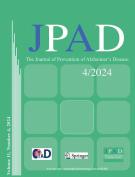Latent Cognitive Profiles and Their Associations with Instrumental Activities of Daily Living among Older Adults without Dementia: A United States National Cross-Sectional Study - 03/04/25

Cet article a été publié dans un numéro de la revue, cliquez ici pour y accéder
Abstract |
Background |
Conventional dichotomous classifications of cognitive status in older adults (normal vs impaired) may obscure distinct domain-specific deficits. Identifying nuanced cognitive profiles could enable personalized interventions, particularly when tailored to instrumental activities of daily living (IADLs).
Objectives |
To identify distinct cognitive profiles in older adults without dementia and assess their associations with overall and domain-specific IADL performance.
Design/Setting/Participants |
Cross-sectional data from 2,219 adults aged ≥65 years without dementia in the nationally representative National Health and Aging Trends Study.
Measurements |
Latent profile analysis classified participants across six cognitive domains: episodic memory, executive function, orientation, psychomotor function, visual attention, and working memory. Logistic and linear regression models with Holm-Bonferroni corrections evaluated relationships between cognitive profiles and IADL performance.
Results |
Five profiles emerged: Profile 1: Overall intact (50.5% of participants); Profile 2: Isolated moderate orientation impairment (15.6%); Profile 3: Mild global impairment with preserved orientation (22.0%); Profile 4: Mild global impairment with significant orientation impairment (5.5%); Profile 5: Moderate global impairment (6.2%). Compared with Profile 1, all other profiles exhibited significantly higher overall IADL difficulty and were more likely to experience challenges with shopping, medication management, meal preparation, and banking (all adjusted p < 0.05). Profile 4 had the highest odds for difficulties with shopping (OR, 2.19; 95% CI, 1.41-3.38; adjusted p = 0.005) and banking (OR, 3.98; 95% CI, 2.62-6.04; adjusted p < 0.001), whereas Profile 5 showed the greatest risk for medication management (OR, 2.55; 95% CI, 1.66-3.90; adjusted p < 0.001) and meal preparation (OR, 2.22; 95% CI, 1.49-3.31; adjusted p = 0.001).
Conclusion |
Nearly half of older adults without dementia exhibit distinct cognitive profiles warranting tailored interventions. Profile 5 requires comprehensive strategies, whereas Profiles 2, 3, and 4 may benefit from orientation-targeted and intensity-varied training in other cognition domain. Incorporating specific IADL tasks (e.g., meal preparation, medication management for Profile 5 and shopping, banking for Profile 4) into cognitive interventions may concurrently enhance cognitive health and functional independence.
Le texte complet de cet article est disponible en PDF.Keywords : Latent profile, cognition, older adults, instrumental activities of daily living
Plan
Bienvenue sur EM-consulte, la référence des professionnels de santé.

